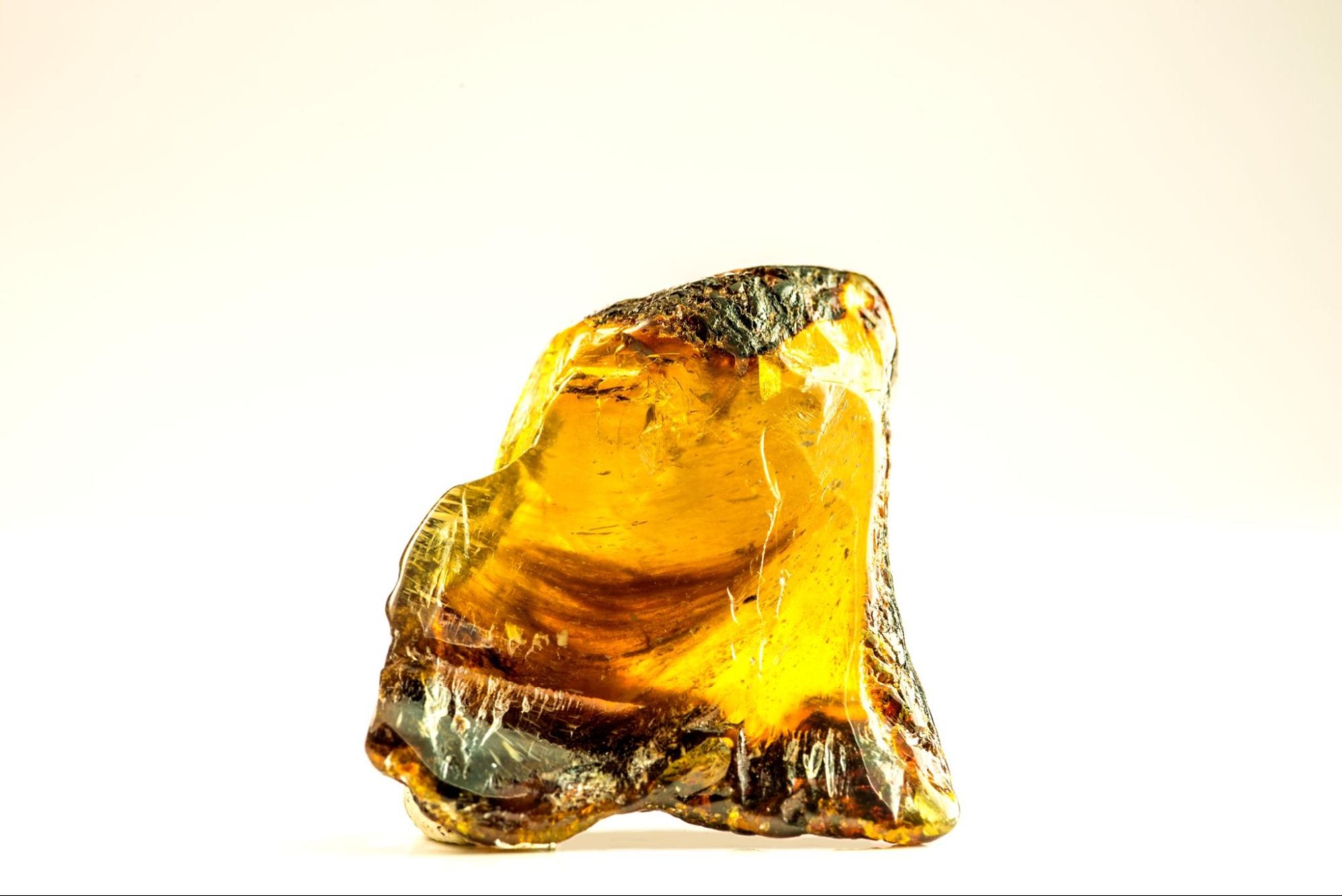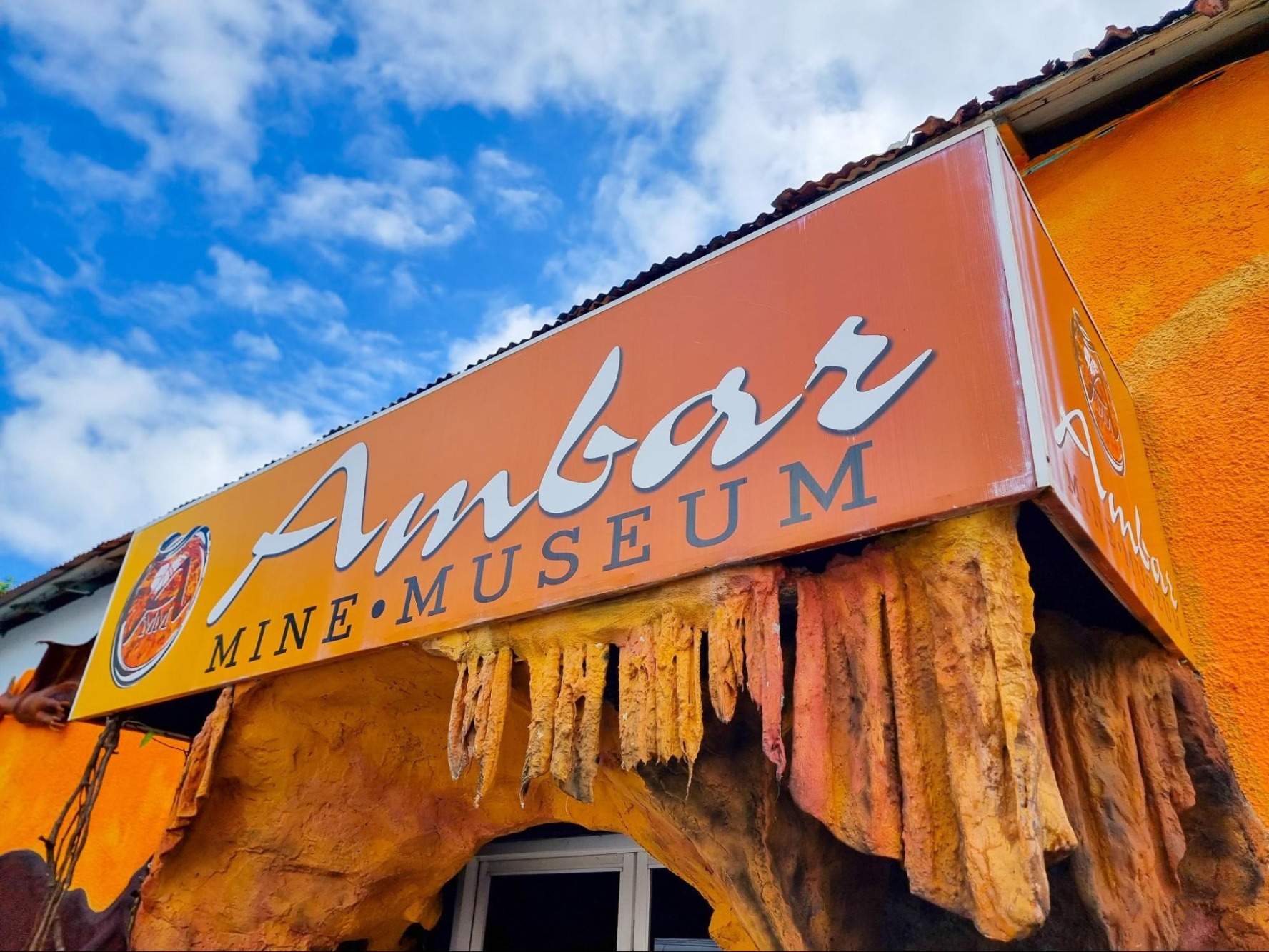Dominican amber is one of the most fascinating and valuable gems in the world—not only because of its beauty but also because of its rich history and cultural significance.
It is especially prized for the unique inclusions it preserves—tiny fragments of prehistoric life captured millions of years ago.
In this article, we’ll take an in-depth look at what Dominican amber is, how it forms, its different varieties, and its cultural and economic importance in the Dominican Republic.
What is Dominican amber?
Amber is fossilized tree resin that has transformed into a precious gemstone over millions of years. Dominican amber is estimated to be between 25 and 40 million years old and originated from the resin of ancient tropical trees, particularly the now-extinct Hymenaea protera.
What makes this amber so special is its ability to preserve small organisms such as insects, leaves, and even feathers inside it—offering scientists and collectors a rare glimpse into prehistoric life. These inclusions turn each piece into a natural time capsule.
Dominican amber is highly valued worldwide for its exceptional clarity, wide range of colors, and the fine detail with which inclusions are preserved. Among its most striking features is the blue amber, a rare variety found only in the Dominican Republic, known for its brilliant glow under sunlight or UV light.
Thanks to its beauty and scientific value, Dominican amber is more than just a gemstone—it’s a fossil jewel that connects us to Earth’s ancient past.

Types of amber in the Dominican Republic
The Dominican Republic is home to a wide variety of amber types, each with unique characteristics that make them special. Here are the most notable ones:
Dominican yellow, red and blue amber
- Yellow amber: The most common type, known for its golden hue. This amber is widely used in jewelry and decorative items.
- Red amber: Less common than yellow, this variety is distinguished by its reddish tones, giving it an air of exclusivity and elegance.
- Dominican blue amber: The rarest and most valuable type. Its unusual blue color results from the way light interacts with its internal structure, making it a highly desired gem for collectors and jewelry lovers.
The diversity of amber types in the Dominican Republic means there is a piece for every taste, contributing to its popularity both locally and internationally. If you're interested in purchasing amber, be sure to verify its authenticity and origin, as this greatly influences its value and meaning.
Amber extraction zones in the Dominican Republic
Amber extraction in the Dominican Republic primarily takes place along the northern coast, especially in regions such as Santiago, Puerto Plata, and the famous Barahona area. Barahona is known as a hub for high-quality amber production, with some of the richest deposits in the country. This region is not only celebrated for its amber but also for its stunning natural beauty and impressive landscapes.
If you get the chance to visit Barahona, you’ll not only find beautiful amber pieces but also enjoy breathtaking beaches and a wide range of outdoor activities. From nature hikes to kayaking excursions, Barahona is a destination that perfectly blends culture and adventure.
It’s also an excellent place to explore other local treasures, such as Dominican larimar, another rare and stunning gemstone that, like amber, is deeply rooted in the island’s identity.

Dominican amber in history and culture
Dominican amber has been an integral part of the country’s history and culture since pre-Columbian times. The Taíno people used it not only as decoration but also for tools and ceremonial objects. Over time, its use has evolved, and today amber is seen as a symbol of national identity and a significant economic resource.
Currently, Dominican amber is considered a cultural heritage, and its production and commercialization provide jobs and opportunities for many families. Amber jewelry is highly valued, and tourists visiting the Dominican Republic often take home a piece of this fossil gem as a souvenir of their trip.
Moreover, amber is not only admired for its beauty—it also holds great scientific value. Inclusions of insects and plants offer scientists valuable insights into the biodiversity and environments of past eras. This makes Dominican amber not just a decorative gem, but also a crucial resource for historical and biological research.
Dominican amber is more than just a precious stone; it is a symbol of the Dominican Republic’s rich history and culture. Its formation, varieties, and impact on the local economy make this gem a fascinating subject worth exploring.
If you’re looking to purchase a piece of amber, Barahona is an excellent place to find high-quality specimens—and don’t forget to enjoy the natural wonders that make this destination so unique. Whether you're wandering through artisan markets or relaxing at Cayo Levantado Resort, you’ll find yourself immersed in the beauty and heritage of an island that proudly treasures its natural gems.
